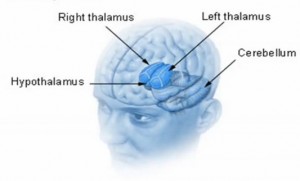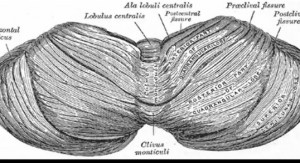What is cerebellum ?
The term cerebellum is derived from Latin and means little brain. It is a part of the brain and very essential in motor control. The cerebellum may also play a part in controlling cognitive activities such as language and attention as well as the regulation of response to emotions such as pleasure and fear. Scientific studies over the years have confirmed the fact that cerebellum is predominantly responsible for functions related to movement of the body.
It is important to know that the motor movements are not initiated by cerebellum. Instead it plays an important part in the coordination of movement, the accuracy of its timing and its precision. Input is received by the cerebellum from the sensory organs, the spinal cord and other areas of the brain. The inputs thus received are used to fine tune all movements. This functionality of cerebellum is the precise reason why any damage or trauma to cerebellum does not result in paralysis, but instead causes deficits in motor learning, fine movements, balance and posture.
Cerebellum anatomy and location
Anatomically, the cerebellum looks like a distinct structure that is different from the brain. It is present at the lower end of the brain, below the cerebral hemispheres. There are parallel grooves which are spaced finely covering the surface of the cerebellum. This is in contrast to the large and asymmetrical complications that are a part of the cerebral cortex.

The outward appearance of the cerebellum should not lead to any confusion about its structure. The fact of the matter is that the cerebellum is essentially a thin, continuous layer of tissue that is folded tightly just like an accordion. This fact is concealed by the outwardly appearing parallel grooves. Along with the thin layer there are various kinds of neurons with precision-like symmetrical arrangement. The most essential neurons are the granule cells and Purkinje cells. This complex network of neurons is what coordinates and directs the humungous signal processing ability of the cerebellum. However, nearly all the output from the cerebellum is passed onto a group of deep and tiny cerebellar nuclei located within its interiors.
Function of cerebellum
There is no doubt in the fact that the cerebellum plays a very direct role in movement control. Additionally, one also needs to know that it has a big part to play in motor learning activities as well; the most important being learning to adapt to modifications in the sensorimotor connections. There are many theoretical models that have been developed to clarify sensorimotor measurement as per the synaptic plasticity which occurs inside the cerebellum. James Albus and David Marr were the pioneers of such models and all the later models were formulated as per the findings of the original model. The early models were based on the acute observation that each Purkinje cell in the cerebellum received two completely dissimilar types of input. One of such inputs consisted of thousand of signals from parallel fibers, and every one of such signals were individually very feeble. The other type of input consisted of a signal from a single climbing fiber. However, this signal is so powerful, that the action potential from that single climbing fiber can result in the development of multiple action potentials in the target Purkinje cell.

The basic idea behind the Marr-Albus theory concludes that the climbing fiber play an important part as a ‘teaching input’, and can cause a long lasting modification in the potency of synchronously executed inputs from the parallel fibers. Studies of prolonged and chronic depression in parallel fiber signals have vindicated the support for such theories. However, the validity of such theories is still under scrutiny and remains a subject of controversy.
Some of the problems related to cerebellum damage or trauma are discussed below:
- Any problem caused as a result of dysfunction of the cerebellum will produce specific symptoms, which in turn are dependent on the area of cerebellum that is affected.
- Cerebrocerebellum or lateral zone damage can cause issues with planned and voluntary movements that require skills, resulting in mistakes in the direction, amplitude, speed and force of movements.
- Flocculonodular lobe damage can lead to loss of balance, with the main symptom being a changed walking style that has a wide stance indicating equilibrium difficulties.
- Upper area cerebellum damage tends to result in gait abnormalities and other issues with the coordination of the legs; whereas lower area cerebellum damage will more often than not, result in deficits in speed and poorly aimed or uncoordinated movements of the hands and arms.
- Midline area cerebellum damage can cause problems in full-body movements. Trauma to the cerebellum that is localized more laterally generally tends to cause problems in the fine movements of the limbs or hands.
There are several types of medical problems that cause trauma or damage to the cerebellum. Some of them include tumors, stroke, hemorrhage, alcoholism, chronic degenerative disorders like olivopontocerebellar atrophy and gunshot wounds or physical trauma of similar kind. A few types of migraine headaches can also result in temporary cerebellum dysfunction, with variable levels of severity. Aging is another factor that can result in degeneration of the cerebellum cells and therefore its functionalities.